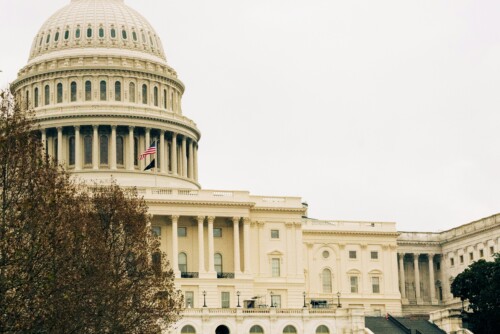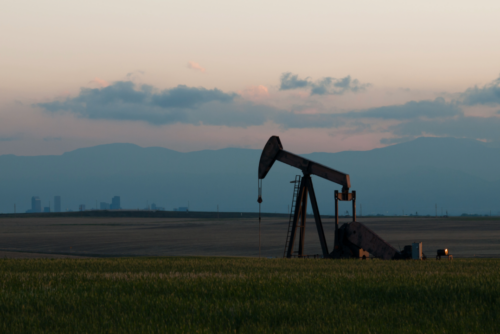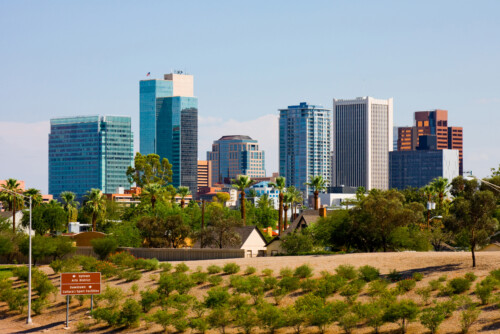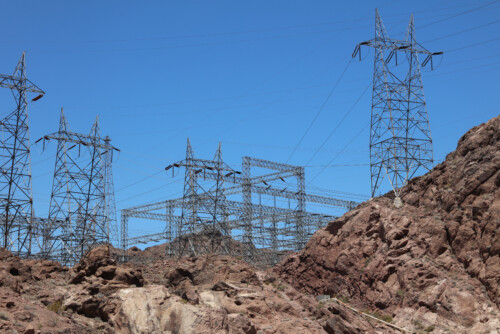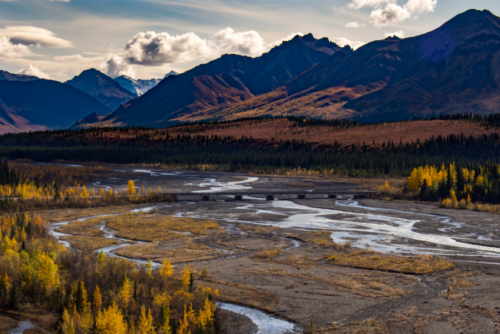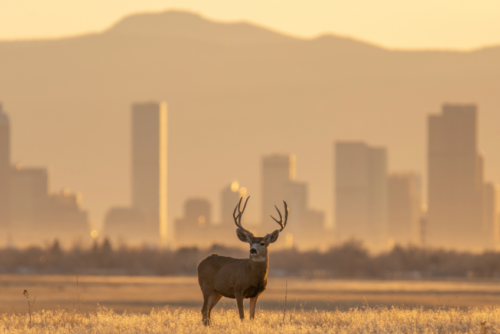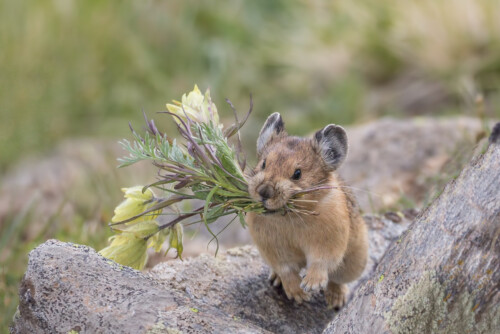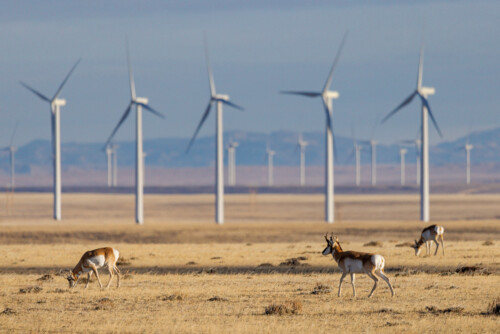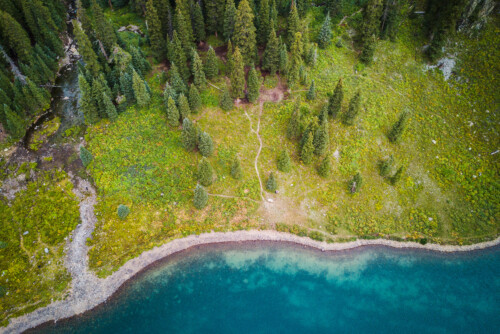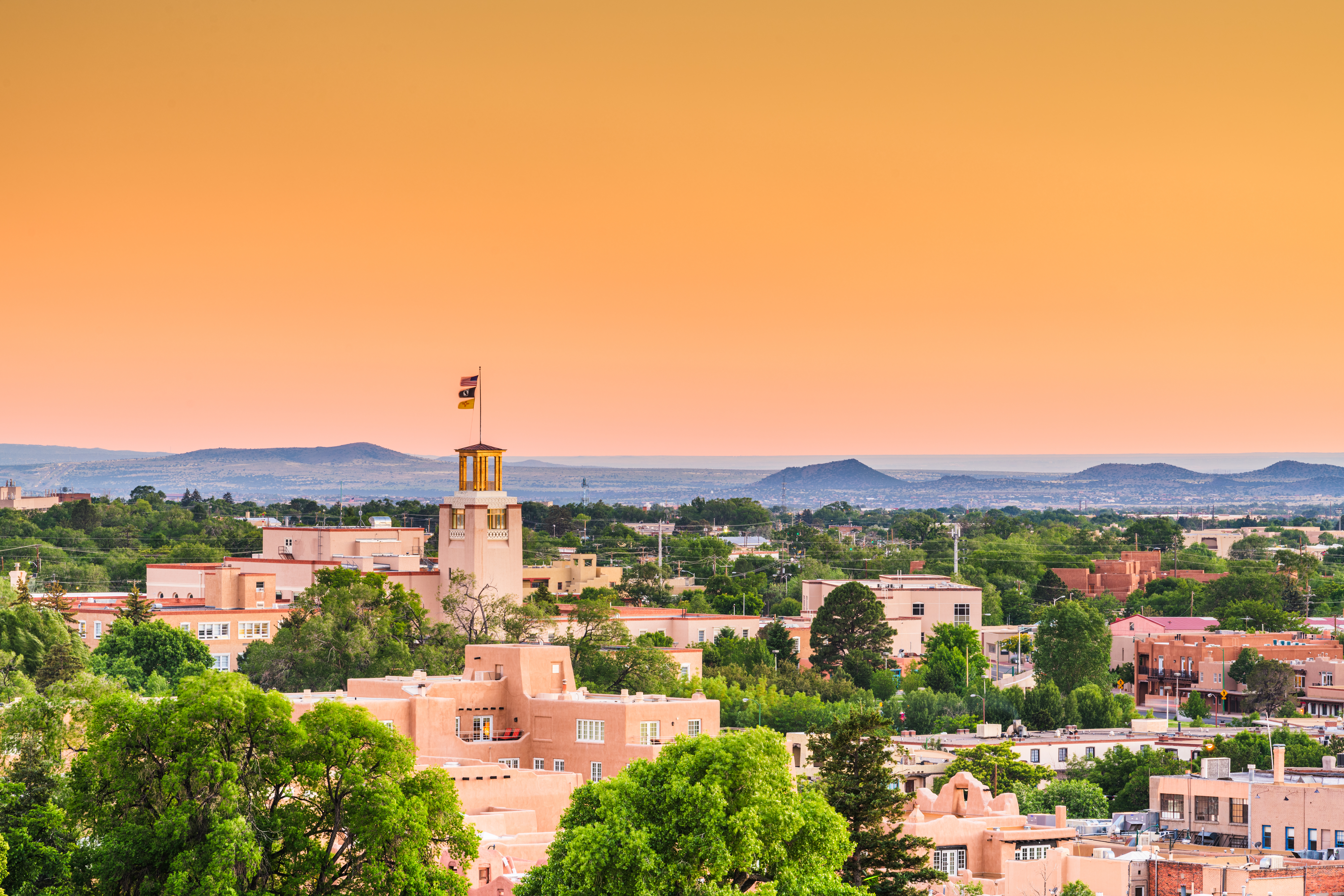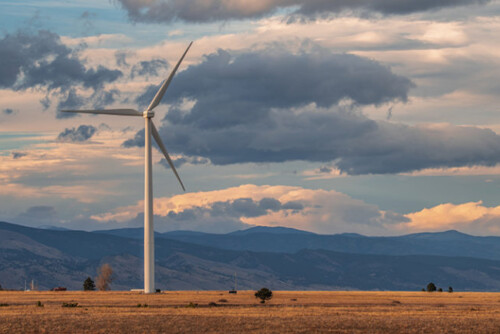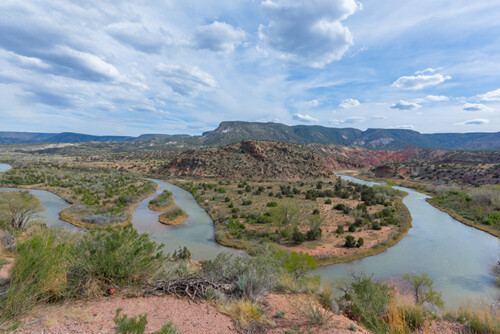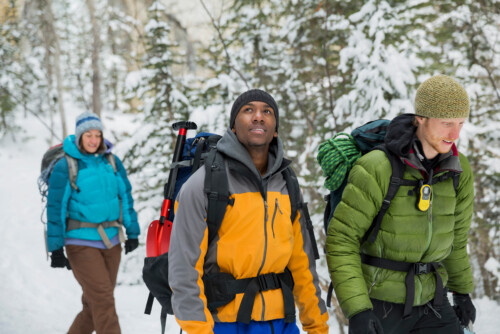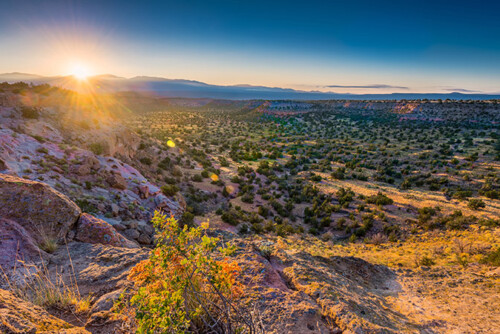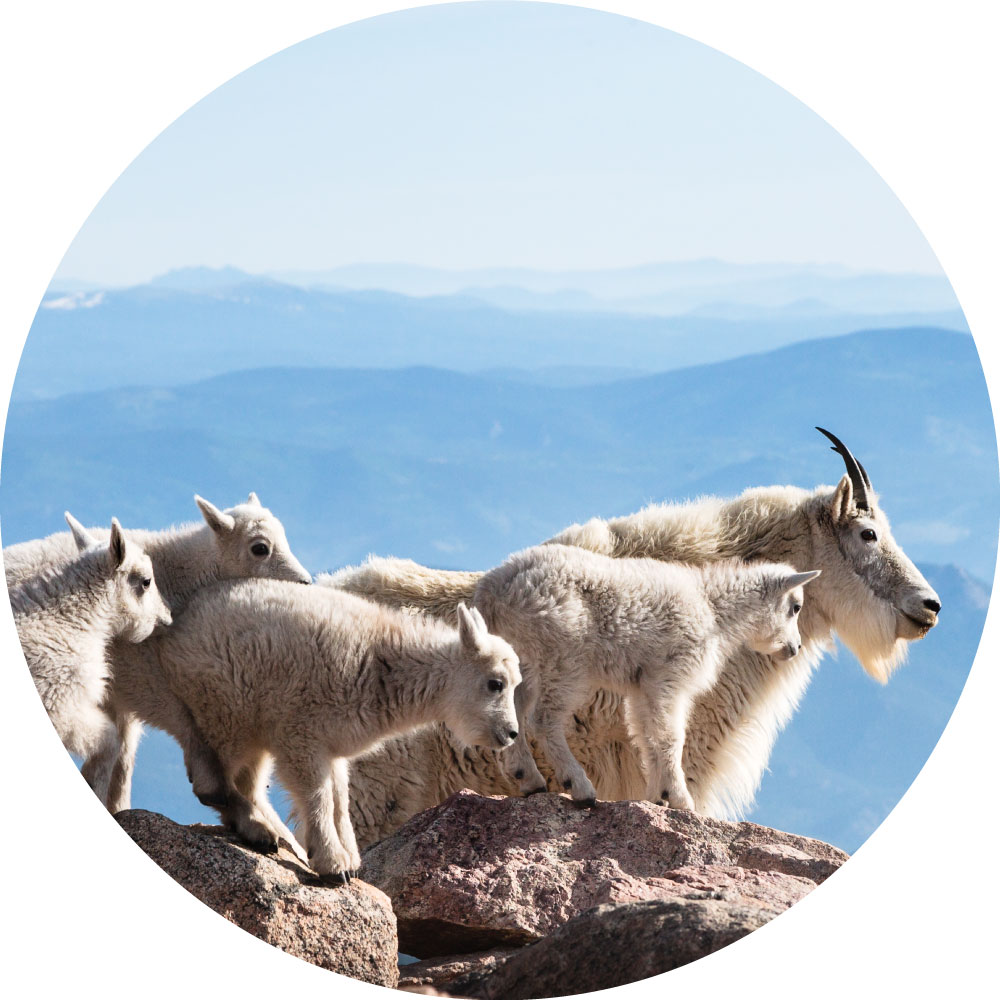
What is a Wildlife Corridor?
Wildlife corridors are essential links between larger areas of wildlife habitat. And while people have long observed that wildlife move, migrate with the seasons, and disperse, new and less expensive GPS technology is expanding our knowledge of where, how, and when. For instance, one of the nation’s longest wildlife migration routes, in which mule deer make a 300-mile round trip yearly journey, was mapped in Wyoming in just the last five years.
We’re also increasingly aware that these corridors – and the wildlife that rely on them – are being threatened as the West develops and becomes more populated. It is critical to protect large areas of essential habitat and ensure that these habitats are connected through designated wildlife corridors.
While most people might think of large bridges over interstates when they hear the term, strategies to protect wildlife corridors can include:
- Constructing overpasses, underpasses, and culverts to allow wildlife to move safely across major roadways;
- Removing fencing or replacing it with wildlife-friendly fencing that includes escape ramps;
- Installing devices to protect wildlife from equipment and tailings pools;
- Decommissioning or closing roads that are no longer needed;
- Keeping or planting vegetation that provides food and cover;
- Protecting water sources (quantity and quality) along migration routes and at stopovers;
- Redirecting development (oil and gas, residential) away from habitat and corridors; and
- Protecting lands such as wildlife refuges or state wildlife areas, or conservation easements.
- Most strategies are tailored to meet the specific challenges and needs of a particular species, but several species may benefit from protections for corridors.
Why do we need to protect wildlife corridors in the West?
Habitat loss and fragmentation are two main causes of the continuing decline in biodiversity and serious threats to wildlife populations. Natural areas in the West disappeared at a rate of one football field every 1.65 minutes between 2001 and 2017. Urban sprawl, transportation development, and energy development are major drivers of habitat loss and fragmentation. It is becoming increasingly difficult for species to maintain the migration patterns that are essential to their survival, especially for big game species that need to move safely across large landscapes. As the West’s population continues to grow, pressure on wildlife from human development will only increase.
Additionally, climate change is fundamentally altering landscapes and habitats, shifting migration patterns and forcing some animals to relocate for survival. Wildlife, humans, and Western lands gain from well-protected wildlife corridors.
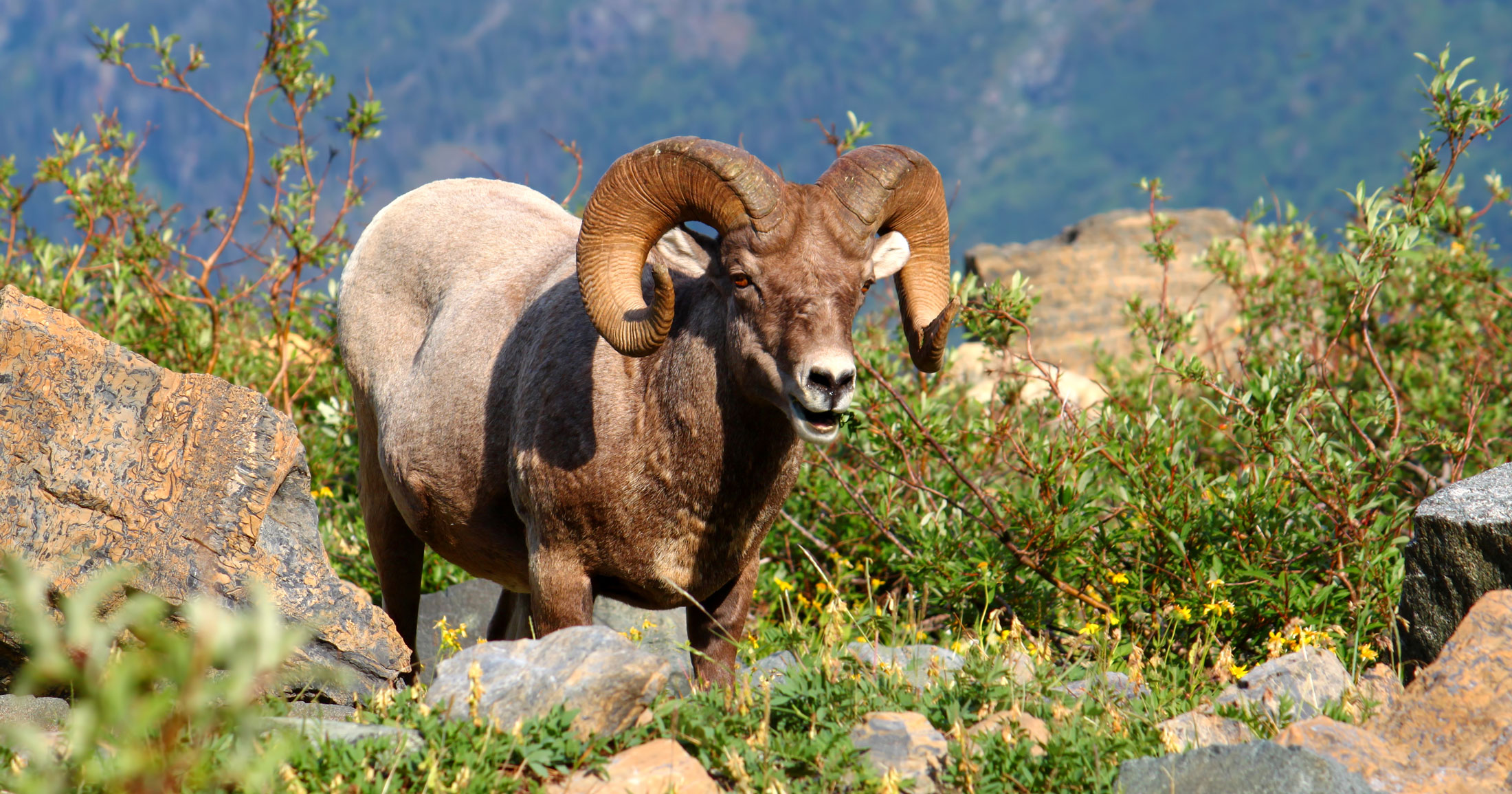
What Are the Benefits of Protecting Wildlife Corridors?
For wildlife
Reconnecting habitat and protecting critical migration routes can go a long way toward protecting some the West’s most important wildlife species. Broad-range species like deer, antelope, elk, black bears, and cougars depend on migration corridors to reach critical habitat for food and refuge, and population health. These species can move incredible distances daily and seasonally. During the summer months, many prefer high-elevation areas, but move into lower elevations during the winter to avoid deep snow and cold temperatures.
For humans
Wildlife corridors also safeguard human life. Thousands of wildlife-vehicle crashes are reported every year in Colorado, New Mexico, and Wyoming alone, resulting in hundreds of millions of dollars in damages, human injury, and even death.
For land
Supporting thriving wildlife populations requires protected and connected landscapes that provide the necessary rest, cover, and resources for those species. Conserving wildlife corridors is one way we can help connect more Western lands and protect them for future generations.
What are Western States Doing to Protect Wildlife Corridors?
Several Western states recently have taken meaningful action to protect wildlife corridors.
Wyoming
Although an estimated 50% of wildlife-vehicle collisions go unreported, from 2002-2016, New Mexico DOT reported 15,213 animal-vehicle collisions, with 1,637 in 2016 alone.
In 2019, New Mexico’s state legislature passed the Wildlife Corridors Act. The law directed the New Mexico Department of Game and Fish and the Department of Transportation to develop a Wildlife Corridors Action Plan. The plan would contain:
- Identification of existing highway crossings that pose a risk to wildlife migration;
- Identification of other human-caused barriers that negatively impact natural movement;
- Projections of anticipated effects that drought and other stressors will have wildlife dispersal;
- Information about how increased movement of species could benefit highly impacted habitats; and
- The best available science and encourage collaboration with tribal governments and federal land managers.
The Wildlife Corridors Action Plan would include a Prioritized Wildlife Corridors Project List focused on projects that minimize habitat fragmentation, allow for safe passage, and increase public safety. Projects will be prioritized based on:
- Their potential to reduce wildlife-vehicle collisions and enhance public safety;
- Current population size and conservation status of impacted species; and
- Local community support for proposed infrastructure.
Of course, wildlife don’t recognize state boundaries. Colorado and New Mexico have each identified the upper Rio Grande and Upper San Juan basin areas as critical, and potentially threatened, migration routes for big game species like mule deer, elk, and pronghorn.
Colorado
The Colorado Department of Transportation (CDOT) reports that wildlife-vehicle collisions account for 6% of reported accidents statewide, and in some areas, can be as high as 25%. Over the past 10 years, CDOT has seen an average of 3,300 reported wildlife hits each year.
In August 2019, Governor Jared Polis signed an executive order directing several state agencies to prioritize, coordinate, and focus on protecting the traditional migration corridors of Rocky Mountain elk, mule deer, pronghorn antelope, mountain goats, bighorn sheep, and moose. Specifically, the executive order directed:
- Colorado Parks and Wildlife to compile a status report of wildlife migration and associated science by the end of the calendar year, and incorporate the importance of migration corridors into public education and outreach efforts;
- Colorado Department of Natural Resources to identify policy, regulatory, or legislative opportunities to ensure the ongoing conservation of seasonal habitat and migration corridors; and
- Colorado Department of Transportation to enable safe wildlife passage and reduce wildlife-vehicle collisions.
WRA offered policy recommendations during the development of the Executive Order, and was proud to be part of a strong coalition of conservation, and hunting and angling organizations that supported the final version. We will continue to work with the agencies to identify, and act upon policy opportunities to protect, habitat and corridors in Colorado.
New Mexico
Although an estimated 50% of wildlife-vehicle collisions go unreported, from 2002-2016, New Mexico DOT reported 15,213 animal-vehicle collisions, with 1,637 in 2016 alone.
In 2019, New Mexico’s state legislature passed the Wildlife Corridors Act. The law directed the New Mexico Department of Game and Fish and the Department of Transportation to develop a Wildlife Corridors Action Plan. The plan would contain:
- Identification of existing highway crossings that pose a risk to wildlife migration;
- Identification of other human-caused barriers that negatively impact natural movement;
- Projections of anticipated effects that drought and other stressors will have wildlife dispersal;
- Information about how increased movement of species could benefit highly impacted habitats; and
- The best available science and encourage collaboration with tribal governments and federal land managers.
The Wildlife Corridors Action Plan would include a Prioritized Wildlife Corridors Project List focused on projects that minimize habitat fragmentation, allow for safe passage, and increase public safety. Projects will be prioritized based on:
- Their potential to reduce wildlife-vehicle collisions and enhance public safety;
- Current population size and conservation status of impacted species; and
- Local community support for proposed infrastructure.
Of course, wildlife don’t recognize state boundaries. Colorado and New Mexico have each identified the upper Rio Grande and Upper San Juan basin areas as critical, and potentially threatened, migration routes for big game species like mule deer, elk, and pronghorn.
